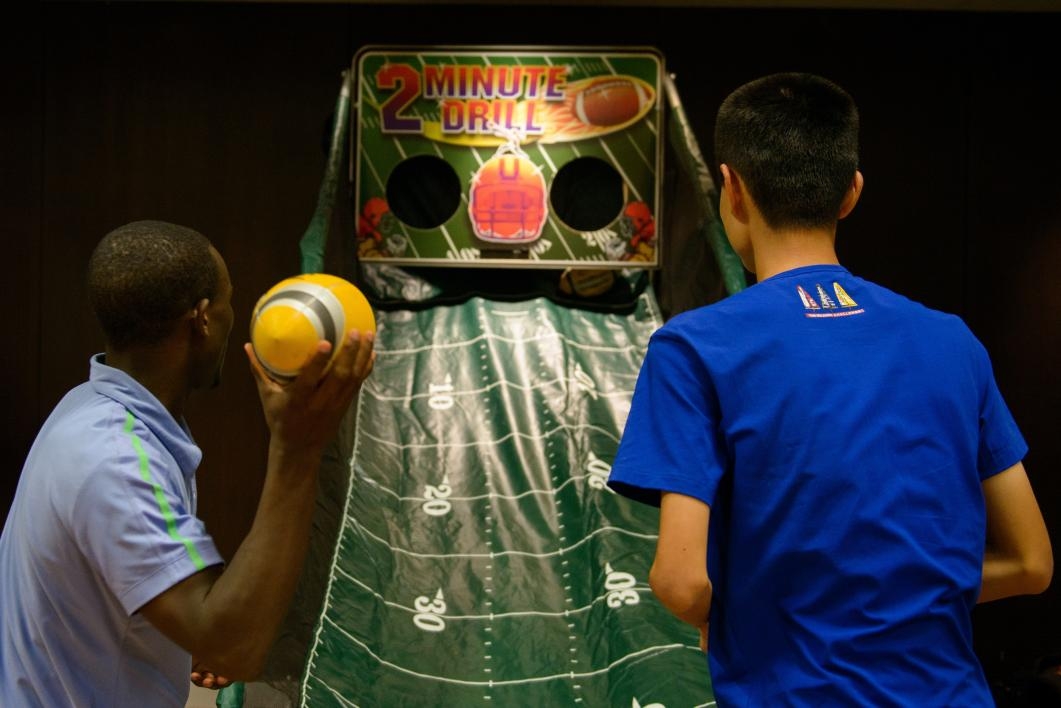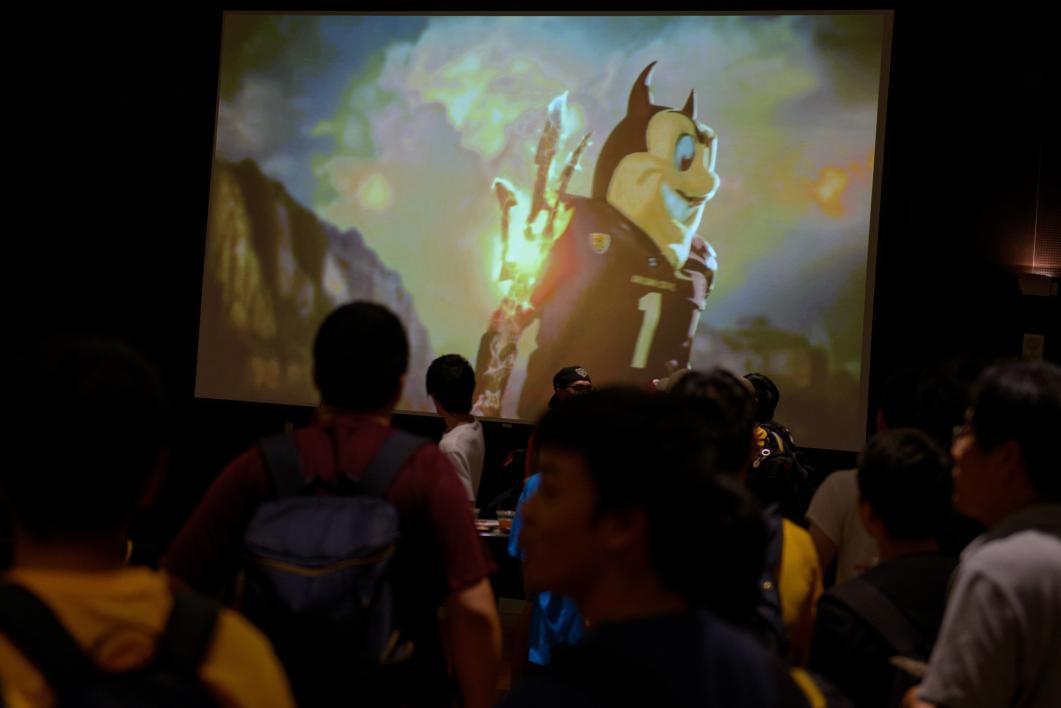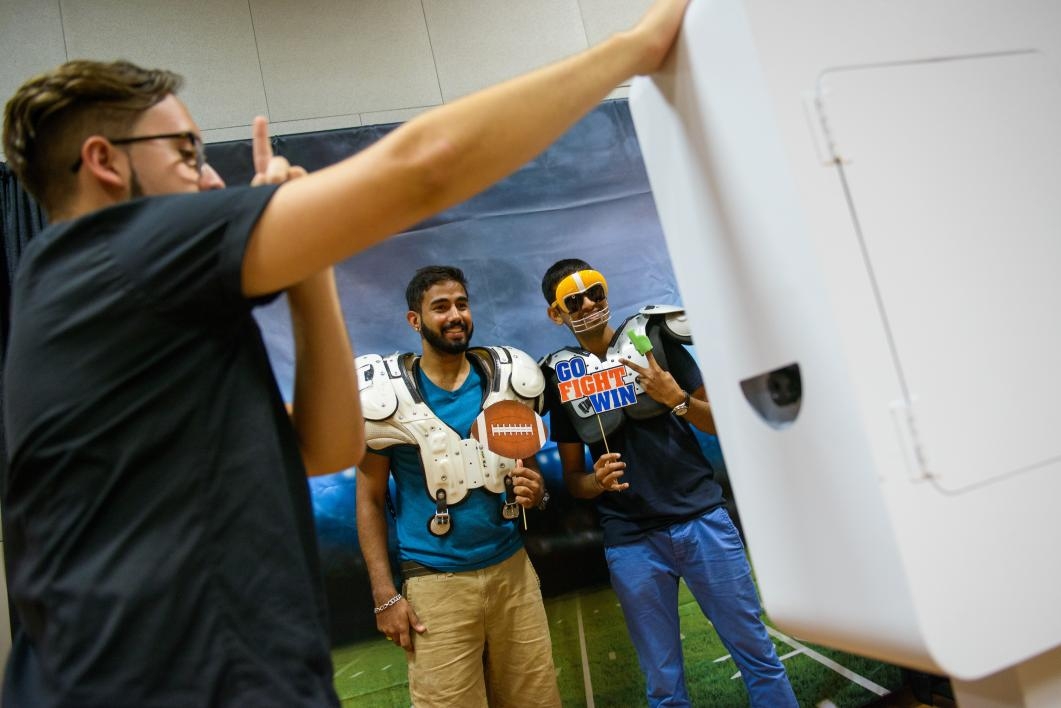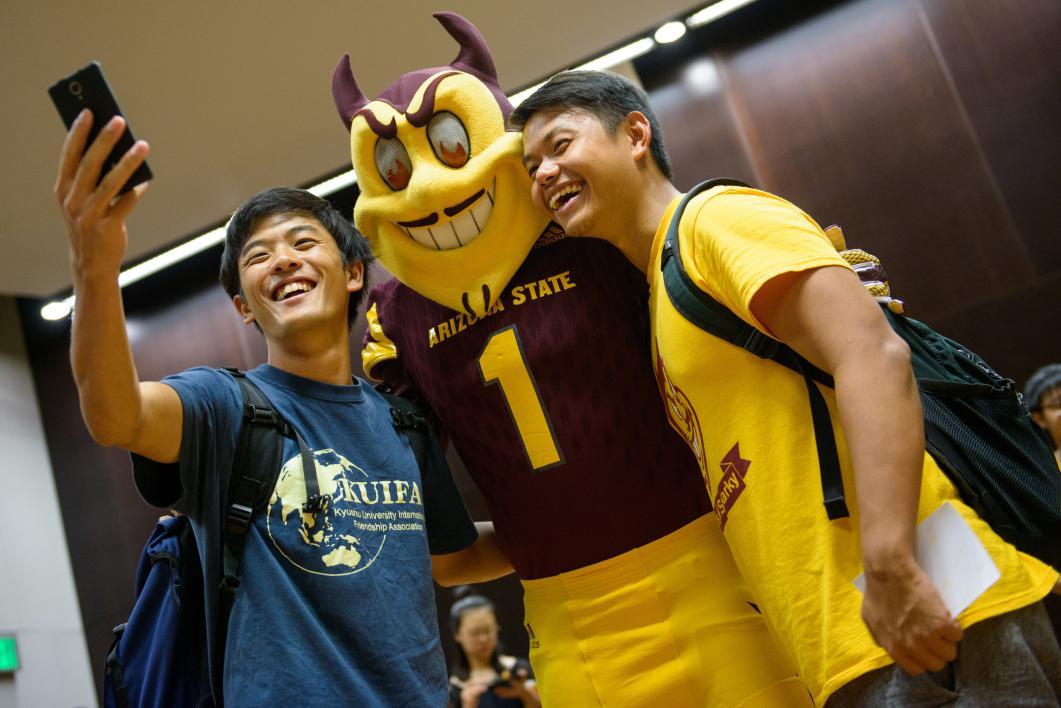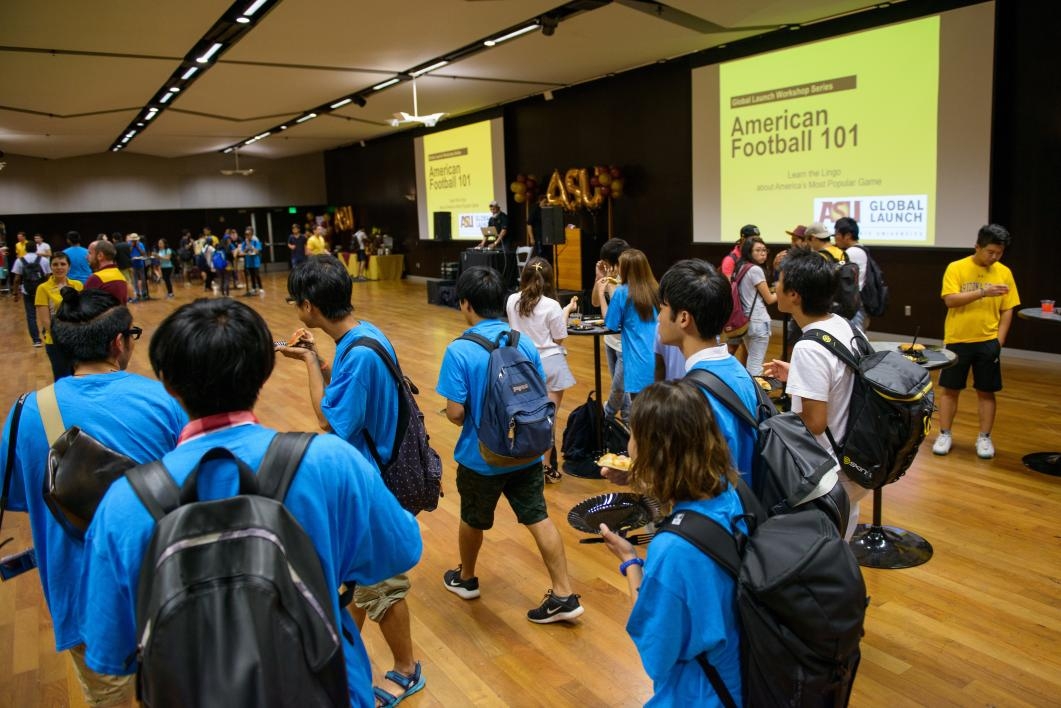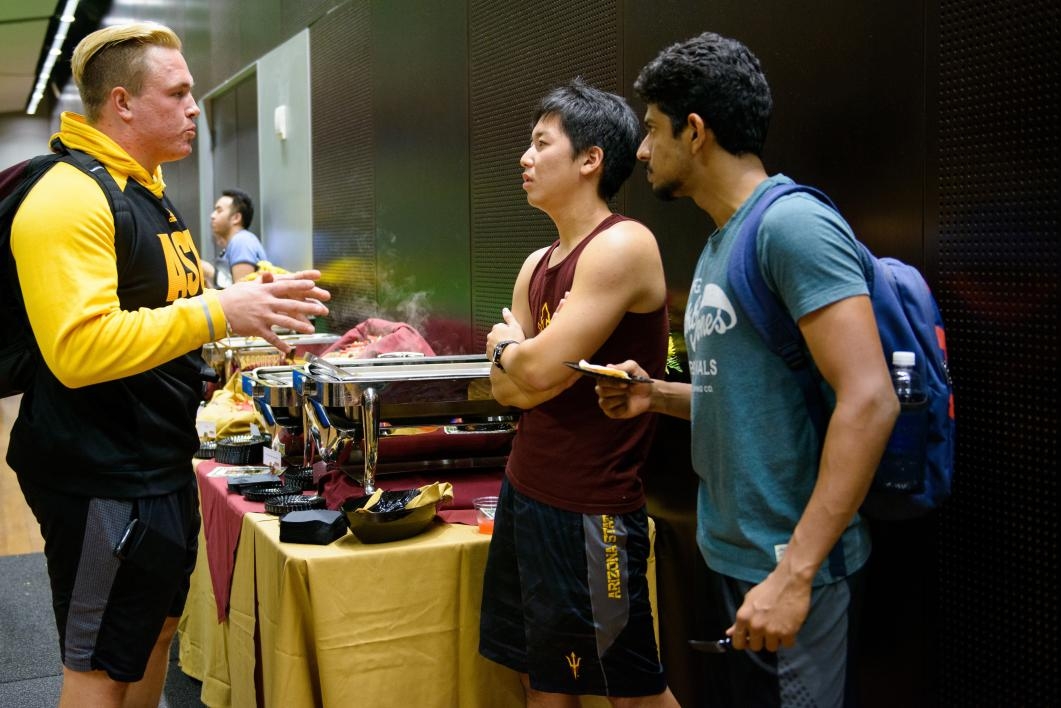ASU international students get a taste of tailgating at Football 101
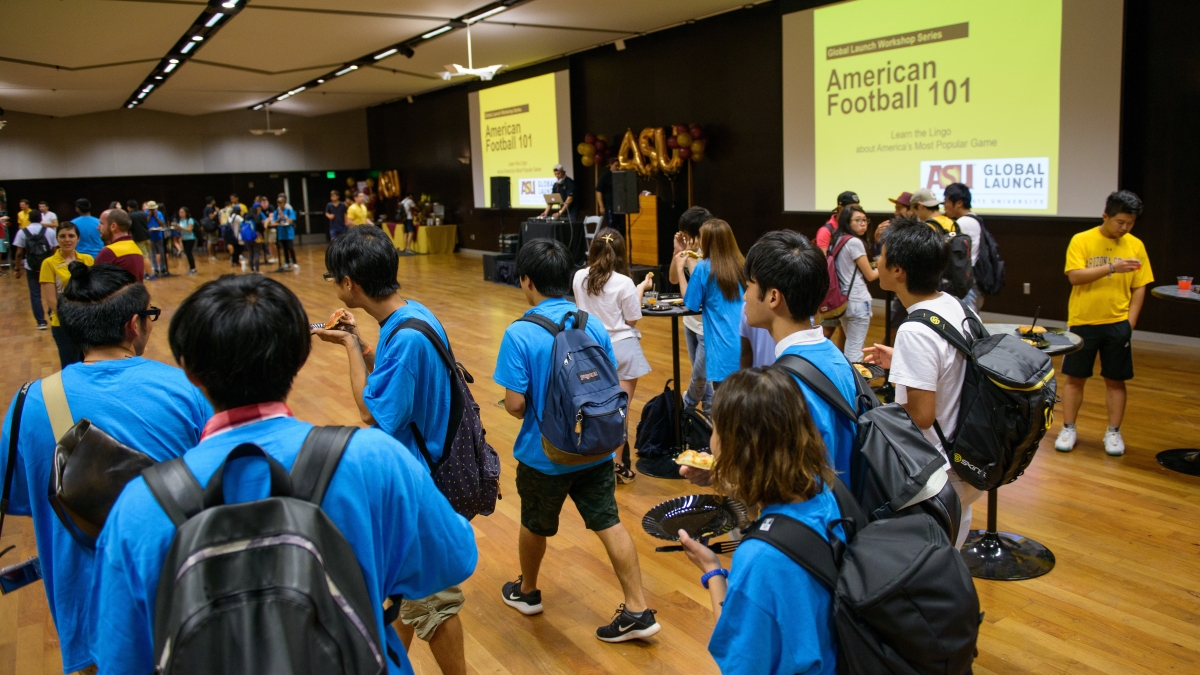
Before the big game this weekend, hundreds of Arizona State University students from around the world got an opportunity to understand a uniquely American sport when they took Football 101 at the Memorial Union on the Tempe campus.
The fourth annual event aims to make the complicated sport intertwined with U.S. culture more accessible to ASU’s diverse international student body. It comes just in time for students to support the Sun Devils (1-0) as they host the Texas Tech Red Raiders (1-0) on Saturday at Sun Devil Stadium.
“Students are used to going to soccer games — the word for ‘soccer’ outside the U.S. is ‘football.’ So most students come to learn about the American football traditions because they’re a big part of the ASU community,” said Hannah Mauger, coordinator of International Student Engagement, which helped ASU’s Coalition of International Students host the event Tuesday.
Organizers tried to re-create the experience of tailgating and filled every corner of the Arizona Ballroom with people, food and games, while a DJ blasted top-40 hits. Students got a chance to pose for photos with Sparky or while wearing football pads in a photo booth.
Though the fun was at the forefront, students new to the game gained a greater understanding of the basics of football, as ASU presenters highlighted the ins and outs of the sport — everything from positions to penalties.
“I’m a big fan of football; for the previous three or four years I’ve watched all the Super Bowls,” said Ryo Takahashi, a junior exchange student from Kyushu University in Fukuoka, Japan. “It’s really strategic compared to soccer or some other sports.”
Takahashi and other students even got to meet some of the Sun Devils’ Saturday stars. Junior defensive lineman Jordan Hoyt was on hand to answer questions from future fans, but he found the conversation topics weren’t limited to just football as he worked the room.
“We talk about football, and then I was wondering what they were majoring in, and where they’re from — a lot of different stuff,” Hoyt said. “We talked about food — you know, I’m a huge sushi lover so there’s a lot of people that know the good spots!
“I love meeting new people, love talking to new people and I feel like everybody has their own story and their own individuality, and it was cool just being able to talk to them and chop it up a little bit.”
The event concluded with a raffle for field passes to an ASU game and more importantly, with a new host of Sun Devil supporters and football fans equipped with more knowledge and respect for the game.
The event “is pretty cool,” said Fawzan Nazir, a mechanical engineering graduate student from India. “The people are so tough in there, the tackling, the defending ... I’m sure I could never play the game.”
More Local, national and global affairs

ASU Library collection captures robust history of Arizona
Editor’s note: This is part of a monthly series spotlighting ASU Library’s special collections throughout 2024.Copper, cattle, cotton, citrus and climate.The so-called “five Cs” of Arizona…

ASU helps University of Guyana faculty earn doctoral degrees in expedited program
Shenella Benjamin and Norwell Hinds joined hundreds of other Sun Devils in receiving PhDs from Arizona State University this week, but their journeys were unique.Benjamin and Hinds, both of whom are…

School of Public Affairs surveys thousands of Arizona lawyers, other legal professionals for state bar
When the State Bar of Arizona decided to learn what its members thought about disciplinary procedures, it needed someone to poll its nearly 25,000 lawyers and other legal professionals.The bar…
